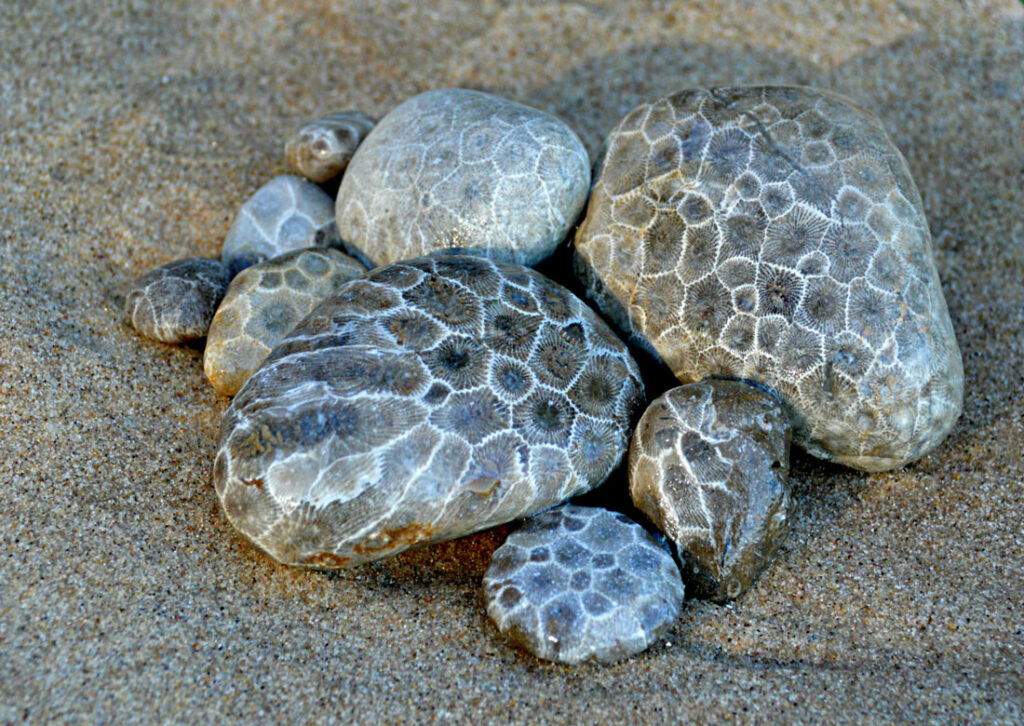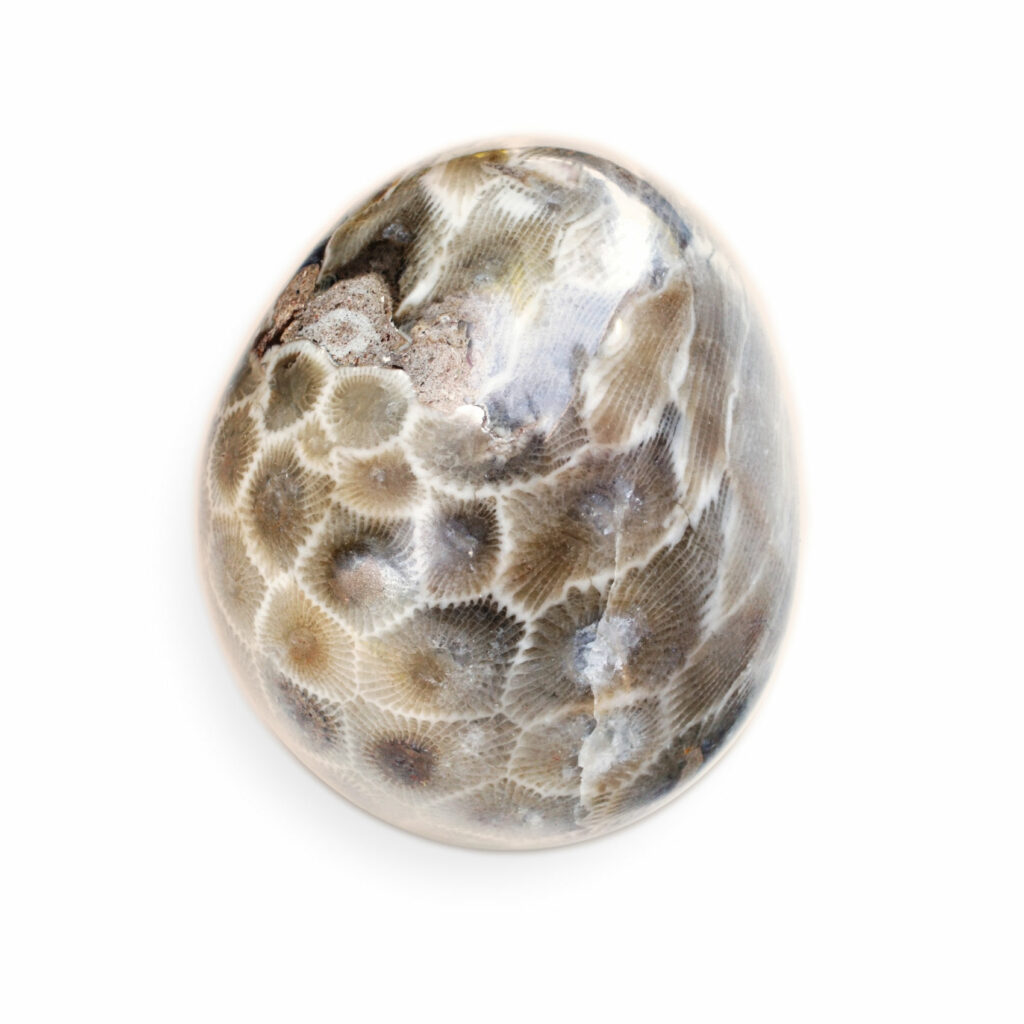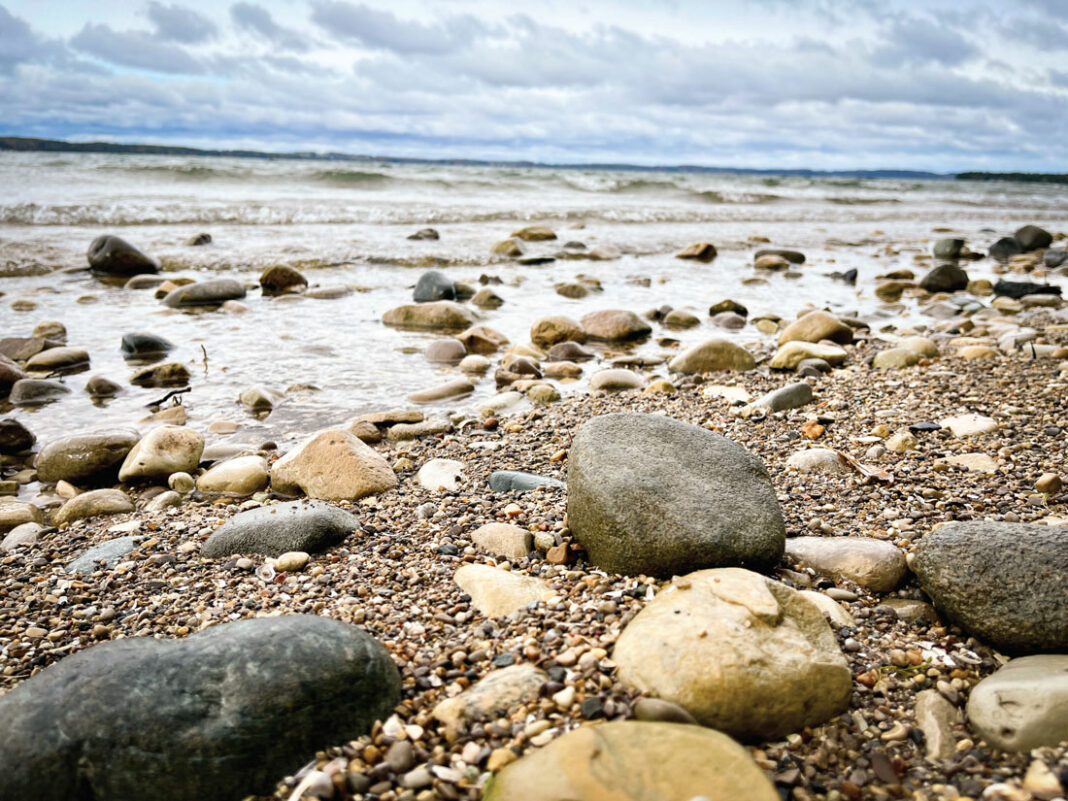When you think of searching out fossilized rock formations, you’re likely to conjure movie icons like Indiana Jones, Dr. Alan Grant, or Lara Croft. But along the coastlines in northern Michigan, you’ll see plenty of regular people flocking to the beaches and shoreline to do just that, in search of the state’s favored Petoskey Stone.
As told by the Petoskey Area Visitors Bureau, well before dinosaurs roamed the earth, over 350 million years ago, the land we know as Michigan was located near the equator. Covered by a warm, shallow, saltwater sea, the colonial coral hexagonaria percarinata thrived with other marine life in tropical reefs. The earth’s plates moved and pushed Michigan north to the 45th parallel and above sea level, which created dry land formations. More recently, about 2 million years ago, glacial action scraped the earth and spread the fossils across the northern Lower Peninsula, depositing major concentrations in the Petoskey area. The prehistoric fossil is called the Petoskey Stone, and it became Michigan’s official state stone in 1965.
While the history lesson is cool, what makes the Petoskey Stone such a coveted treasure by visitors and residents alike?
“Petoskey Stones are unique looking, and actually quite easy to spot on the beach,” said Jim Powell, the bureau’s executive director. “But I tell you, once you find your first one—you get hooked.”

Both the stone and the town that is home to this geological treasure are named in honor of a local chief of the Odawa Nation and well-respected businessman, Chief Ignatius Petoskey, and symbolize the area’s rich history. Whether people are walking along the water’s edge or visiting the town from out of state, the sheer number of gift shops and stores offering the stones or trinkets made out of the fossils speaks to the demand for the keepsake.
“We’ll get people in at the visitor’s center on a drizzly day wondering what to do,” said Powell. “I tell them, consider it good luck because that’s the best time to look for Petoskey Stones.”
With the faint outline on the stone, you can sometimes miss the intricate fossilized coral imprint. However, the outline becomes clearer and easier to find when the stones are wet. Which often leads to the question—are Petoskey Stones hard to find? Powell says, “no.”
“Each spring, after the ice recedes, the weather, wind, and waves bring new stones to the surface,” said Powell. “By the end of summer, they may seem pretty picked over, but one good storm can always stir up more.”
Powell adds, “While you’re busy looking down at the sand, rocks, and waterfront, don’t forget to look up every once in a while. There’s so much natural beauty to take in all around you.”
This is just one of many tips the Visitors Bureau can offer. Powell has several helpful suggestions if you’re a newbie rock hound.

Safety First
Always be careful and mind your surroundings—especially if you’re walking on rocks, which can be slippery. Also, keep an eye out for wave action, and don’t get too close to the breakwater.
Public vs. Private
Be aware of your location. While public beaches and parks offer full access to visitors, make sure you haven’t wandered onto someone’s private property. Bayfront Park or Magnus Park are good places to start.
How Many is too Many?
Is there a limit if you’ve gotten the hang of Petoskey Stone hunting? According to the Michigan DNR, you are only allowed to remove 25 pounds of stones per year. So, unless you’ve got some massive plan for making a Petoskey Stonehenge—consider leaving some for other rock hunters.
Where to Begin
As we said, spring is the optimal season, but you might find some newly turned rocks after a big storm. Bring along a bucket or other container to carry back your finds. Also, pack a garbage bag to pick up trash along the way. It’s the best way to thank the land for your treasures.
What Next
Petoskey Stones are beautiful just as they are, but they can also be sanded or polished with rock polish or mineral oil. Never put a Petoskey Stone in a rock tumbler. They are highly porous and will disintegrate—putting all your hard work to waste.





